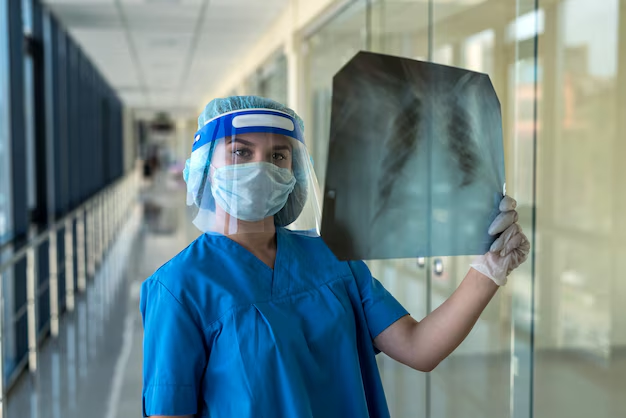Is Tuberculosis a Virus or Something Else? Here’s What You Need to Know
When you hear the word "tuberculosis," your mind might immediately jump to thoughts of severe coughs, long treatments, and contagious diseases. But there's one question that often baffles many people: Is Tuberculosis a Virus? Understanding the nature of tuberculosis (TB) is crucial for grasping how it spreads, how it's treated, and how to protect yourself and others.
Tuberculosis: Bacterial, Not Viral
To get straight to the point: Tuberculosis is not caused by a virus; it is caused by a bacterium. The microorganism responsible for TB is called Mycobacterium tuberculosis. Unlike viruses, which require a host cell to reproduce, bacteria are independent, single-celled organisms that can thrive in various environments.
What is Mycobacterium tuberculosis?
Mycobacterium tuberculosis is a slow-growing bacterium that primarily targets the lungs, though it can affect other parts of the body. The bacteria are rod-shaped and possess a unique, waxy coating that makes them particularly resistant to destruction by the body's immune system and certain antibiotics.
How is TB Spread?
TB is an airborne disease, primarily spread through droplets released when an infected person coughs, sneezes, or talks. This means close contact with someone who has active TB can increase your risk of becoming infected.
Symptoms of Tuberculosis
Recognizing the symptoms of TB is important for early detection and treatment. The symptoms can vary depending on whether TB is latent or active.
Latent vs. Active TB
Latent TB:
- The bacteria are present in the body but inactive.
- The person shows no symptoms.
- Latent TB is not contagious.
Active TB:
- The bacteria are growing and causing symptoms.
- This form is contagious if it affects the lungs or throat.
Common Symptoms
- Persistent cough lasting more than three weeks
- Coughing up blood
- Chest pain during breathing or coughing
- Unexplained weight loss
- Fatigue and fever
- Night sweats and chills
Diagnosis of Tuberculosis
Timely and accurate diagnosis is essential to managing TB effectively. Here's how healthcare professionals typically diagnose it:
Tuberculin Skin Test (TST)
This involves injecting a small amount of tuberculin into the skin's surface and observing a reaction after 48-72 hours. A raised bump might indicate TB exposure, but further tests are needed for confirmation.
Blood Tests
Blood tests, such as the Interferon Gamma Release Assays (IGRAs), measure how the immune system reacts to TB bacteria, providing another layer of information.
Imaging and Sputum Test
- Chest X-ray: To check for lung abnormalities.
- Sputum Test: Examination of mucus from the lungs can reveal the presence of TB bacteria.
Treatment Options for Tuberculosis
TB, when identified, is treatable with medication, even though it may take several months to clear the infection. Here are some aspects of treatment:
Medications
A cocktail of antibiotics is often used over a 6-9 month period. Common medications include:
- Isoniazid
- Rifampin
- Ethambutol
- Pyrazinamide
Adherence to Treatment
For treatment to be effective, strict adherence to the medication regimen is vital. Incomplete treatment can lead to drug-resistant TB strains, complicating future management.
Directly Observed Therapy (DOT)
This approach involves healthcare workers supervising TB patients taking their medications to ensure compliance and success.
Prevention of Tuberculosis
Preventing TB involves several strategies, from vaccination to lifestyle adjustments.
BCG Vaccine
The Bacille Calmette-Guerin (BCG) vaccine is used in countries where TB is common. It offers protection against severe forms of TB in children, though it's less effective in adults against pulmonary TB.
Avoid Close Contact
Limiting contact with individuals diagnosed with active TB and ensuring proper ventilation can help mitigate the spread.
Proper Mask Usage
In high-risk environments, wearing appropriate masks can serve as an additional preventive measure.
The Global Impact of Tuberculosis
Despite being treatable, TB remains a significant global health challenge.
Prevalence
Each year, millions of new TB cases are diagnosed globally, with substantial numbers of deaths resulting from the disease, especially in developing countries with limited healthcare infrastructure.
Drug-Resistant TB
The emergence of drug-resistant TB strains poses a major public health threat. These strains do not respond effectively to standard treatments, requiring alternative, often more toxic and expensive treatments.
TB and Its Similarities with Viral Infections
Though TB is caused by a bacterium, it has some overlapping characteristics with viral infections.
Mode of Transmission
Both TB and many viruses, like the flu, spread through respiratory droplets.
Symptoms
Common symptoms such as coughing, fever, and fatigue can be confusingly similar to those of viral respiratory infections, making symptomatic differentiation challenging.
Practical Measures and Public Awareness
Combatting TB requires a comprehensive public health approach augmented by individual awareness.
Improved Access to Healthcare
Enhancing healthcare systems, improving access to diagnostics, and ensuring the availability of medications are crucial steps in controlling TB spread and impact.
Public Education
Educating the public about the nature of TB, its symptoms, and the importance of adherence to treatment can significantly influence outcomes.
Supporting Medical Research
Investing in research can expedite the development of new diagnostics, treatments, and vaccines.
Bringing It All Together
Understanding whether tuberculosis is a virus or a bacterium is foundational to comprehending how it behaves, spreads, and how it can be effectively treated and prevented. By recognizing TB as a bacterial infection, one can appreciate the unique challenges and solutions necessary to manage this persistent global health issue.
Summary List of Key Takeaways ✨
- Nature of TB: TB is caused by a bacterium, Mycobacterium tuberculosis, not a virus.
- Transmission: Spread through airborne droplets from an infected person's lungs.
- Symptoms to watch: Persistent cough, chest pain, weight loss, fatigue.
- Diagnosis techniques: Skin tests, blood tests, imaging, and sputum examination.
- Treatment regimen: Combination of antibiotics over 6-9 months.
- Prevention tactics: Vaccination, good ventilation, mask-wearing.
- Global and personal impact: Education and public health efforts are critical in battling TB.
Armed with this knowledge, individuals can take informed steps in safeguarding their health and contributing to public health efforts against TB. 🌍
